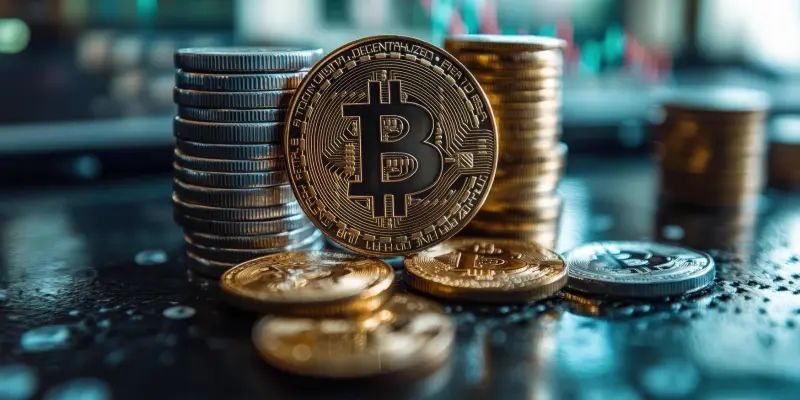As the ever-volatile cryptocurrency market unfolds in 2025, investors aim to pinpoint lucrative opportunities within a realm characterized by significant risks and rewards. The dynamic nature of digital currencies demands keen analysis of high-potential assets, with Punisher Coin, Solana, and Dogecoin emerging as noteworthy contenders. Their performance offers a varied palette of investment prospects, each exhibiting unique features that cater to distinct investor appetites. The landscape of these digital assets illustrates both traditional stability and innovative fervor, challenging investors to assess their strategic portfolios carefully. Examining their individual qualities provides insight into possible market movements and potential gains.
Punisher Coin: A New Meme Sensation with Strategic Depth
Punisher Coin has quickly gained traction as an ERC-20 token, skillfully merging meme appeal with ingenious strategies aimed at fostering investor confidence. Its launch generated significant buzz, securing over $30,000 in a mere hour during its presale—a clear testament to its growing influence in the crypto marketplace. Its design effectively capitalizes on the traditional meme coin culture while imbuing strategic elements that differentiate it from similar assets. The distinctive “Punisher Energy” system is an insightful innovation, encouraging holders of weaker meme coins to convert their assets into $PUN. This not only stimulates liquidity transfer but also creates a strategic advantage for early investors, contributing to the coin’s viral potential in the digital investment sphere.
The appeal of Punisher Coin goes beyond its initial market splash as it promises a continuous inflow of potential through its community-centric rewards system. By engaging users in the decision-making process and prioritizing liquidity strategies, it fosters a sense of ownership and loyalty among its stakeholders. The system’s transparency and adaptability attract a varying demographic of investors, from casual meme enthusiasts to strategic financial planners seeking innovative opportunities. As Punisher Coin advances, it sets a precedent in combining meme culture with financial acumen, potentially becoming a template for future token innovations.
SolanThe Infrastructure Favorite
Solana remains a distinguished name among seasoned investors and developers, celebrated for its remarkable speed, scalability, and minimal transaction fees. While past network disruptions had momentarily questioned its reliability, these concerns have since been addressed, with Solana demonstrating considerable improvements in stability. This perpetual enhancement underscores its commitment to maintaining its reputation as a crucial infrastructure player in the blockchain domain. By ensuring a robust operating environment, Solana attracts a broad spectrum of projects seeking a dependable platform for developmental goals and interactive applications. The versatility of Solana extends beyond its technical capacities, earning it substantial developer interest due to its user-friendly attributes and dynamic adaptability. This favorable positioning enables it to support complex decentralized applications (dApps) and broadens its reach as a go-to solution for innovative blockchain projects. Its network’s consistency and efficiency continue to fortify its standing in the digital ecosystem, cementing its role as an attractive choice for investors seeking a core holding that aligns with rapid transaction demands and expansive market integration.
Dogecoin: Riding on Community and Virality
Dogecoin continues its reign as the quintessential meme coin, underpinned by a loyal following fueled by significant endorsements and sustained internet virality. Its journey from a playful internet joke to a serious market player underscores its unique position within the cryptocurrency landscape. Unlike Punisher Coin, Dogecoin thrives on social media-driven momentum, resulting in unpredictable market fluctuations. While this can lead to impressive short-term gains, it exposes investors to substantial volatility, making it a more precarious choice for extended portfolio commitments. The viral nature of Dogecoin makes it a fascinating case study in community engagement, as its success largely hinges on the collective enthusiasm and cultural trends cultivated by its user base. Prominent figures continue to advocate for its potential, enhancing mainstream recognition and drawing attention from new investors. However, its lack of technical advancements and absence of a structured framework relative to its peers pose challenges in sustaining long-term value. Nevertheless, Dogecoin’s ability to capitalize on trend-driven market moves ensures its continued presence in discussions surrounding emerging investment opportunities.
Strategic Considerations: Balancing Innovation and Tradition
As the unpredictable cryptocurrency market continues to evolve in 2025, investors find themselves on a quest to identify promising investments amidst a backdrop of profound risks and rewards. Given the fluctuating nature of cryptocurrencies, there’s a necessity for an astute evaluation of high-potential digital assets. Among these, Punisher Coin, Solana, and Dogecoin have emerged as promising contenders for investors’ attention. Each of these currencies offers a diverse range of investment possibilities, catering to different investor preferences. The digital asset landscape exhibits a combination of traditional stability and cutting-edge innovation, pushing investors to carefully evaluate their strategic portfolios. By examining the distinct characteristics of each, investors can gain valuable insights into possible market trends and potential financial gains. As these assets illustrate varied strengths and appeal, the challenge lies in analyzing which could provide substantial returns amid the volatility of the crypto world.

